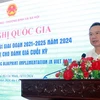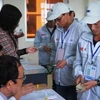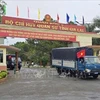HCM City (VNA) - A high-quality workforce is considered an important factor for the Mekong Delta to make breakthroughs in the future, according to the annual Mekong Delta Economic Report 2020.
The report was jointly prepared by the Vietnam Chamber of Commerce and Industry and the Fulbright University Vietnam’s Fulbright School of Public Policy and Management.
Despite being abundant, the workforce in the Mekong Delta is aging, and younger workers are tending to migrate to other regions, especially Ho Chi Minh City and the southern region, where job opportunities are plentiful, according to the report.
The Mekong Delta now has the lowest immigration in the country and the highest emigration. It is also the only region to have recorded population growth of zero percent during the 2009-2019 period.
Secretary of the Dong Thap provincial Party Committee Le Quoc Phong said the province has launched five strategic breakthroughs for 2020-2025, including continuing to improve workforce quality to meet development demand amid the fourth Industrial Revolution and global integration, enhancing the quality of educational establishments, linking with universities, and paying attention to the transfer of technological advances and economic management knowledge to farmers.
Meanwhile, Secretary of the Can Tho municipal Party Committee Le Quang Manh said the city is now home to over 70 universities and research institutes and more than 7,450 people are involved in scientific research, including leading units in agriculture in the country and the region such as Can Tho University (CTU), Can Tho University of Technology, Nam Can Tho University, and the Mekong Delta Rice Research Institute.
To develop human resources and scientific research, Can Tho looks to continue expanding close and effective ties with regional localities in both breadth and depth via sustainable measures.
CTU Rector Prof. Ha Thanh Toan said it has set a goal of becoming one of the 20 leading universities in Southeast Asia before 2030 and among 1,000 leading universities globally before 2045./.

New planning views climate change as opportunity for Mekong Delta
A draft master plan for the Mekong Delta for 2021-2030 and vision to 2050, recently released to collect public feedback, views climate change as not only a challenge but also an opportunity for local development.






















